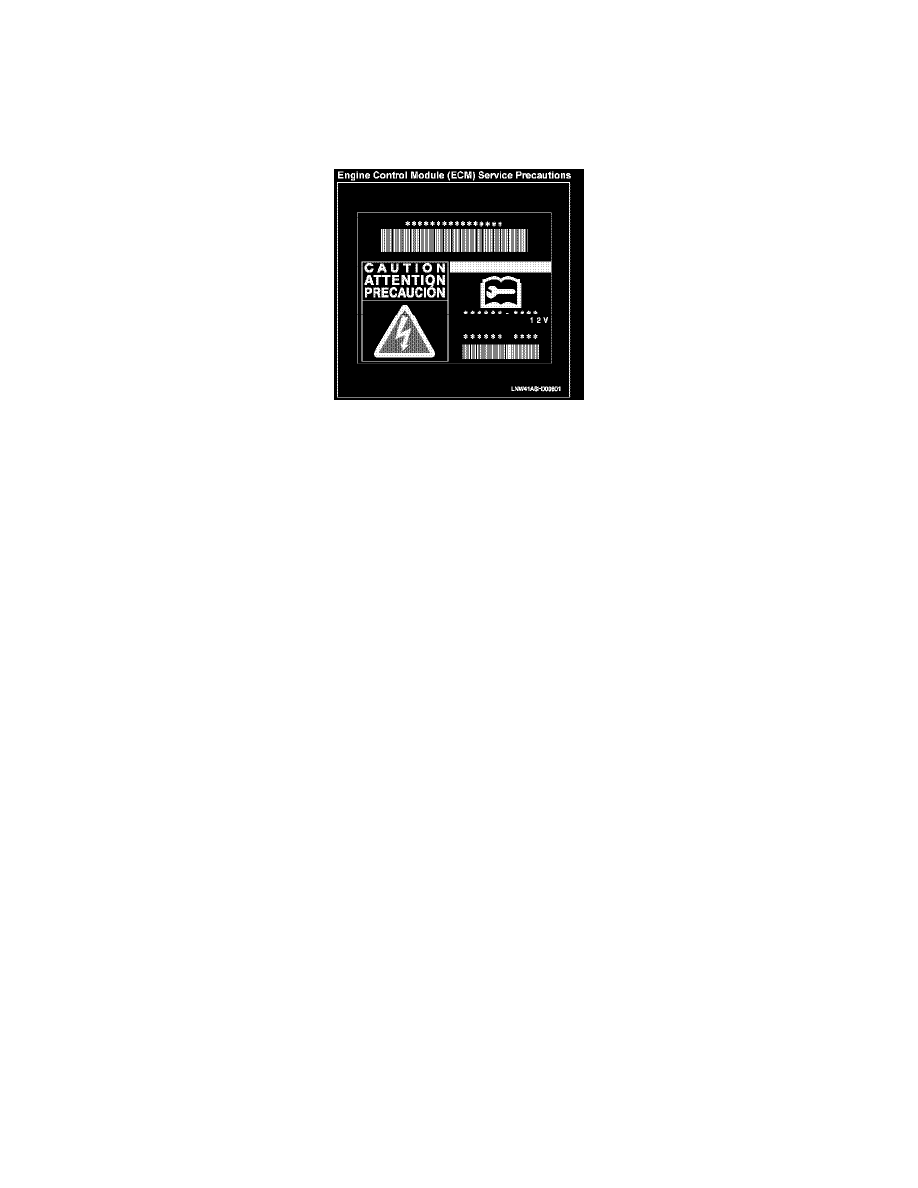NPR L4-5.2L DSL Turbo (2005)

The engine control module (ECM) supplies a buffered voltage to various switches and sensors. The ECM can do this because in some cases, resistance
in the ECM is high enough value that a test lamp may not illuminate when connected to the circuit. An ordinary shop voltmeter may not give an accurate
reading because the voltmeter input impedance is too low. Use a 10 Mohm input impedance DMM, to ensure accurate voltage readings. The input and/or
output devices in the ECM include analog-to-digital converters, signal buffers, counters, and special drivers. The ECM controls most components with
electronic switches which complete a ground circuit when turned ON.
Engine Control Module (ECM) Service Precautions
The engine control module (ECM) is designed to withstand normal current draws associated with vehicle operation. Avoid overloading any circuit.
When testing for opens and shorts, do not ground or apply voltage to any of the ECM circuits unless instructed to do so. In some cases, these circuits
should only be tested using a DMM. The ECM should remain connected to the ECM harness.
Aftermarket Electrical and Vacuum Equipment
Aftermarket or add-on electrical and vacuum equipment is defined as any equipment which connects to the vehicle's electrical or vacuum systems that is
installed on a vehicle after the vehicle leaves the factory. No allowances have been made in the vehicle design for this type of equipment. No add-on
vacuum equipment should be added to this vehicle. Add-on electrical equipment must only be connected to the vehicle's electrical system at the battery
power and ground.
Add-on electrical equipment, even when installed to these guidelines, may still cause the powertrain system to malfunction. This may also include
equipment not connected to the vehicle electrical system such as portable telephones and audios. Therefore, the first step in diagnosing any powertrain
fault is to eliminate all aftermarket electrical equipment from the vehicle. After this is done, if the fault still exists, the fault may be diagnosed in the
normal manner.
Electrostatic Discharge Damage
Electronic components used in the engine control module (ECM) are often designed to carry very low voltage. Electronic components are susceptible to
damage caused by electrostatic discharge. By comparison, as much as 4,000 volts may be needed for a person to feel even the zap of a static discharge.
There are several ways for a person to become statically charged. The most common methods of charging are by friction and induction.
-
An example of charging by friction is a person sliding across a vehicle seat.
IMPORTANT:
To prevent possible electrostatic discharge damage, follow these guidelines:
-
Do not touch the ECM connector pins or soldered components on the ECM circuit board.
-
Do not open the replacement part package until the part is ready to be installed.
-
Before removing the part from the package, ground the package to a known good ground on the vehicle.
-
If the part has been handled while sliding across the seat, while sitting down from a standing position, or while walking a distance, touch a
known good ground before installing the part.
-
Charge by induction occurs when a person with well insulated shoes stands near a highly charged object and momentarily touches ground. Charges
of the same polarity are drained off leaving the person highly charged with opposite polarity.
